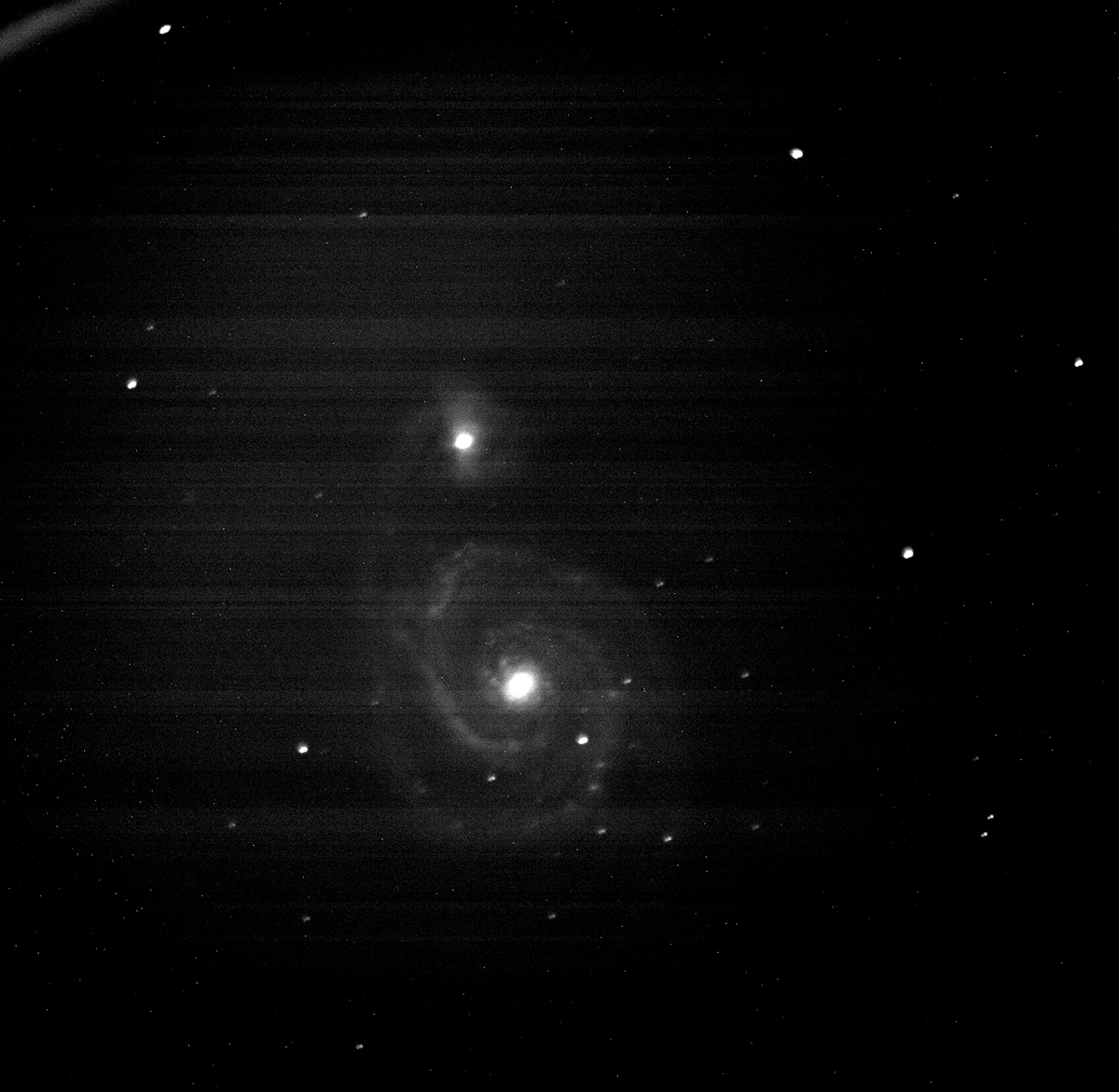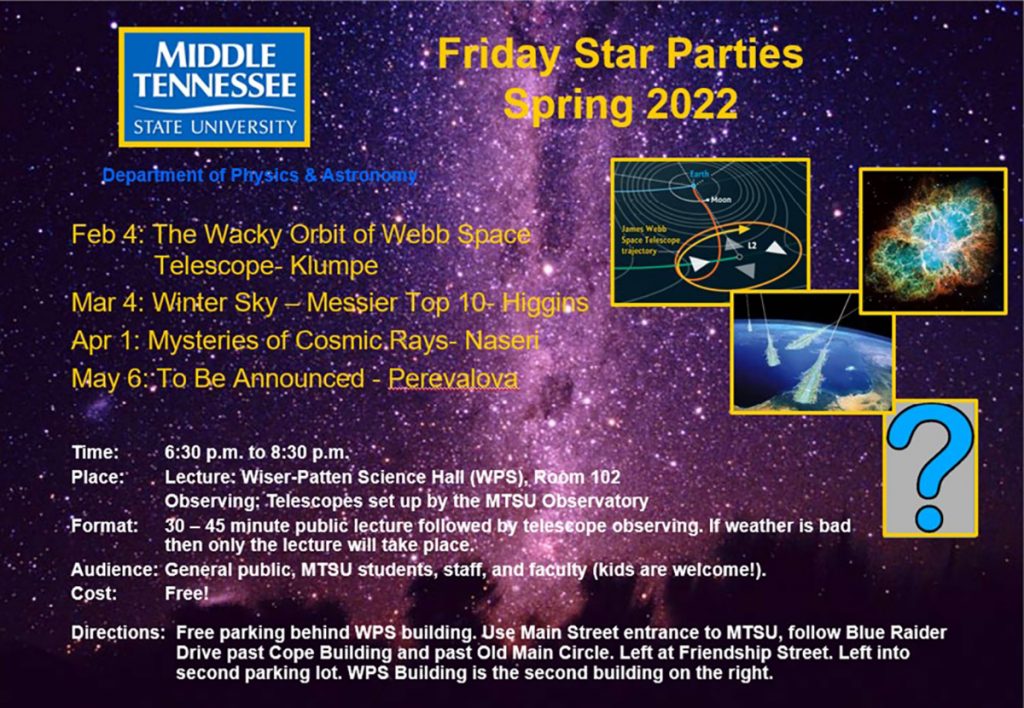MTSU Physics and Astronomy professor Chuck Higgins continues the department’s spring Star Party series at 6:30 p.m. Friday, March 4.
Higgins will bring the topic “Winter Sky/Messier Top 10″ to the audience in Room 102 of Wiser-Patten Science Hall.
Friday Star Parties are free and open to the public, and MTSU students, staff and faculty, and children are welcome. The format is a 30- to 45-minute lecture followed by a telescope viewing at the MTSU Observatory, weather permitting.

A section of the Whirlpool Galaxy is shown in a photo taken by Dr. Katelyn Stringer, an MTSU alumna, in 2013 while attending the university. It is considered Messier Catalogue No. 51, one of French Astronomer Charles Messier’s 110 catalogued objects in the galaxy. It will be part of professor Chuck Higgins’ Star Party presentation, starting at 6:30 p.m. Friday, March 4, in Wiser-Patten Science Hall Room 102 (Submitted photo by Katelyn Stringer)
Because of the continuing pandemic, wearing masks is recommended but not required.
Regarding his topic, Higgins said French astronomer Charles Messier “was a comet hunter, and in the late 1700s he cataloged over 100 ‘fuzzy’ objects that were not comets.”
These objects are known today by their Messier Catalog number, M1 to M110, and they are some of the best objects to view through binoculars or telescopes, he added.

Dr. Charles Higgins
Beginners and seasoned observers relish in viewing these objects time and time again. It is a matter of pride for some to claim they have seen all 110 Messier objects.”
Higgins will highlight 10 of the best Messier objects to see in the winter sky, including the double star cluster in Perseus, the Pleiades or “seven sisters,” the Andromeda Galaxy and the great Orion Nebula, just to name a few.
He will present basic information about each object and “show wonderful photos taken from amateurs to Hubble Space Telescope,” he said. “If the weather is clear, we plan to step outside and show you where you can see them in the sky.”
Future Star Parties will include:
• April 1 — “Mysteries of Cosmic Rays,” led by lecturer Neda Naseri.
• May 6 — Topic TBA, led by lecturer Irina Perevalova.
Free parking is available behind Wiser-Patten Science Hall. To find parking, click here. To reach campus, follow East Main Street to the MTSU entrance, take Blue Raider Drive past the Cope Administration Building and Old Main Circle. Turn left onto Friendship Street and left into the second parking lot. Wiser-Patten is the second building on the right.
For more information about the Department of Physics and Astronomy, one of 11 College of Basic and Applied Sciences departments, call 615-898-2130.
— Randy Weiler (Randy.Weiler@mtsu.edu)

COMMENTS ARE OFF THIS POST